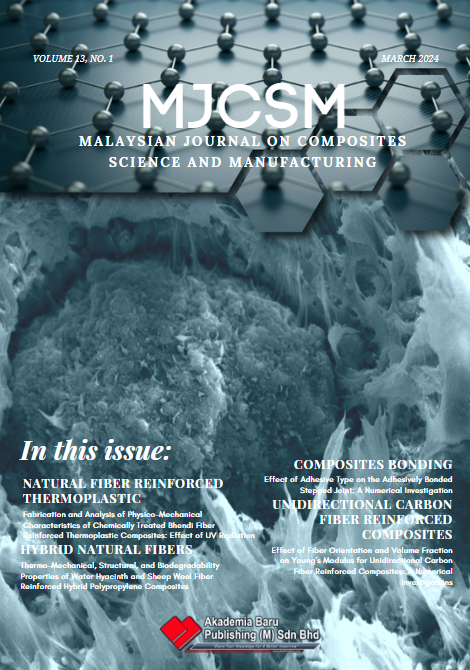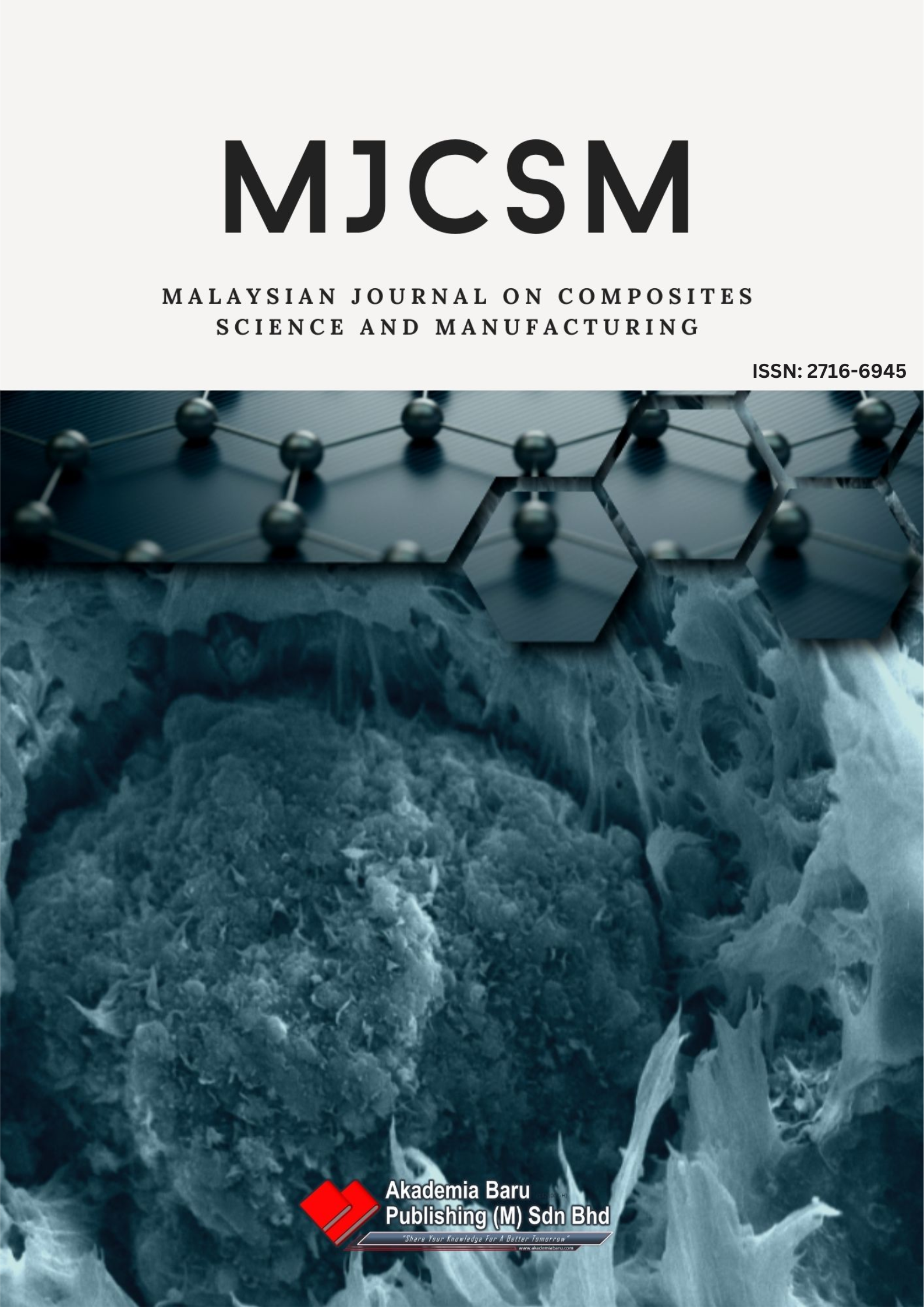Effect of Adhesive Type on the Adhesively Bonded Stepped Joint: A Numerical Investigation
DOI:
https://doi.org/10.37934/mjcsm.13.1.8297Keywords:
Adhesively bonded joint, Stepped joint, Peel stress, Failure strengthAbstract
Single-lap joints are by far the most widely used adhesive joints and have been the subject of considerable research over the years. It is used in the automobile and aerospace industry where bolted or riveted joints are impossible. The joint strength in adhesively bonded joints depends on the adhesive and adherend properties and adherend geometry. In this paper, both the adhesive property and adherend geometry are considered. Two types of adhesives, i.e., SBT9244 (flexible) and DP460 (stiff), and three types of adherend geometry, Single Lap Joint (SLJ), One Step Lap Joint (OSLJ), and Three Step Lap Joint (TSLJ) are considered, and the effect of these are investigated by using a commercially available software Abaqus. The maximum peel stress occurs in a lap joint towards the edges of the joint and is minimum around the center region. The maximum peel stress is responsible for the failure of the joints, and the objective of this research was to reduce the peel stress, i.e., provide a more uniform stress distribution. Soft adhesive maximum peel stress and shear stress occur in [Type-I] 8.6 MPa and 6.4 MPa, respectively. Similarly, stiff adhesive maximum peel stress and shear stress occur in [Type-I] 37.14 MPa and 20.44 MPa, respectively. It is found from this investigation that if a relatively soft adhesive (SBT9244) is used in the joint, then the stress distribution reduces compared to a stiff adhesive (DP460). On the other hand, if steps are introduced in the bonded region, the stress distribution becomes more uniform and increases the bond strength.
Downloads












